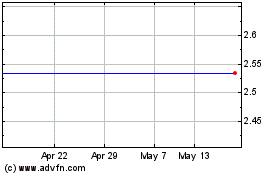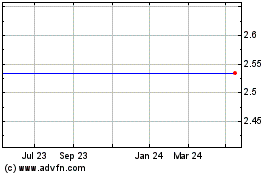-- Short haul revenues declined somewhat, with tactical
reductions in capacity on selected routes resulting in a 1.9 higher
load factor and stabilisation of yields.
-- Retail and cargo revenues grew at a rate of 5.8% and 22.7% respectively.
-- Foreign exchange movements benefited revenues by an estimated EUR25 million.
Operating costs in Q2 2015 rose by 8.8% to EUR434.4 million (Q2
2014: EUR399.1 million). The main factors affecting this increase
were:
-- Higher transatlantic activity in the quarter relative to
prior year with a 9.7% increase in long haul capacity
-- Negative impact of foreign exchange movements of EUR46 million.
-- Lower US Dollar fuel prices. The Group realised an average
blended fuel price (excluding into-plane fees) of US$838 per metric
tonne for Q2 2015, representing a 14.3% decrease from prior year
(Q2 2014 blended fuel price: US$978). The decrease is lower than
the corresponding spot fuel price movement due to hedging
arrangements entered into on a two year rolling timeframe. Given
the appreciation of the US Dollar noted above, in euro terms, the
Group's average blended fuel price (excluding into-plane fees)
increased year on year (EUR766 per metric tonne for Q2 2015
compared to EUR712 in Q2 2014).
The significant appreciation of the US Dollar and UK Sterling
versus the euro (Q2 2015 average US dollar rate of US$1.09 up 20.4%
and average UK Sterling rate of GBP0.72 up 12.2%) had an adverse
impact on operating profit of EUR21 million:
-- Aer Lingus incurs a greater amount of US Dollar denominated
costs than it generates in revenues. This means that Aer Lingus is
structurally short US Dollars. The opposite situation applies for
Sterling as the Group generates a larger amount of UK Sterling
revenues compared to costs.
-- Aer Lingus estimates that, everything else remaining equal,
the year-on-year difference in the stronger US Dollar and UK
Sterling rates noted above have negatively impacted Q2 2015
operating costs (including balance sheet revaluations but excluding
the effect of FX hedges) by approximately EUR46 million (or 12%).
Maturing foreign exchange contracts contributed EUR1.0 million to
the quarter's results.
-- This negative movement in operating costs was offset by a
positive impact on revenues of approximately EUR25 million.
The Q2 2015 operating profit, (before net exceptional items) of
EUR34.5 million, is EUR4.2 million below that reported in Q2 2014.
This year-on-year change in the quarterly operating result is
driven by significantly higher US$ denominated costs and seasonal
factors with the Easter holiday period occurring over Q1 and Q2 in
2015 compared to Q2 in 2014. Management are confident about the
underlying trading trends for the Group.
Other Q2 2015 developments
-- Cost reduction: Aer Lingus' focus on active cost base
management continued in Q2 2015 with the objective of achieving
target EUR40 million run-rate savings by the end of 2016. Over 40
projects have commenced, including:
o The Group launched a voluntary severance programme in February
2015. Exits from the organisation under this programme are
on-going. At 30 June 2015 33 FTEs had left Aer Lingus under this
programme. At this date a further 26 applicants had formally agreed
to participate in the programme and leave Aer Lingus in the latter
half of 2015.
o Multi-sector bars were implemented across the majority of the
Group's short haul routes in April 2015 and have lead to
improvements in productivity and a significant reduction in
wastage.
o Other projects relating to third party procurement,
productivity initiatives overhead reductions have commenced and are
at various stages of scoping and implementation.
-- Cabin crew: In Q2 2015, agreement was reached with cabin crew
and their representatives on a revised framework for rosters and
resourcing. This agreement should address the issues that were at
the heart of the cabin crew industrial action in the first half of
2014.
-- US pre-clearance: The US Department of Homeland Security
recently announced that it plans to enter into negotiations to
expand pre-clearance operations to eight European airports. Given
the infrastructure and staffing requirements as well as the related
financial investment required to support pre-clearance, Aer Lingus
does not believe that this announcement will have an impact on the
competitive advantage derived from US pre-clearance in its Dublin
hub in the near to medium term.
-- IASS pension solution: The Group continued to make steady
progress in implementing the IASS pension solution which was
approved by Aer Lingus shareholders in December 2014. As at 30 June
2015, EUR55.6 million of the EUR190.7 million once-off contribution
remained in escrow, available to be transferred to individuals' new
defined contribution pension scheme accounts upon the execution of
waivers. As at 24 July 2015 EUR137.3 million of the EUR190.7
million had been transferred with 63.4% (78.9% for active members
and 50.8% for deferred members) of waivers executed.
Factors affecting H2 performance
Factors which are specific to Q2 2015 but are either not
expected to recur or are expected to evolve positively over the
remainder of 2015 are:
-- Capacity management: While Aer Lingus selectively reduced
capacity in the first half year (4.2% in short haul ASKs), the
Group will increase capacity on specific short haul routes in Q3
2015, with a 3.3% increase in ASKs compared with Q3 2014. Early
indications are that Q3 forward booking factor and yield metrics
are developing positively compared to prior year. Long haul ASK
capacity is forecast to increase by 16.4% in Q3 2015 compared with
the prior year (13.9% increase in ASKs deployed in the first half
of 2015) and is the result of increased frequencies on established
routes, with the addition of an "eighth" A330 from May 2015 onwards
and the short term lease of a B767 for a 12 week period in the
summer. The continuation of our demand led strategy in 2015 will
provide greater choice to customers travelling between Ireland,
Europe and North America with efficient and easy transfer
options.
-- Fuel prices: Aer Lingus increased its fuel hedging position
in December 2014 and the benefits of these lower priced hedging
contracts will be more evident in the latter half of 2015. This may
be seen in the profile of fuel hedges in the table below with lower
average hedged prices expected over the remainder of 2015:
Fuel hedging position Q1 2015 Q2 2015 H1 2015 Q3 2015 Q4 2015 H2 2015 Full year
as at Q2 2015 2015
---------------------------
Act. Act. Act. F'cast F'cast F'cast F'cast
--------------------------- ------- ------- ------- ------- ------- ------- ---------
Estimated fuel consumption
('000 MT) 92 145 237 161 119 280 517
Percentage hedged 90% 90% 90% 89% 89% 89% 89%
Average hedged price
/ MT (US$) 907 856 876 808 769 791 830
------- ------- ------- ---------
Average hedged price/
MT (EUR) 783 783 783 Not applicable
--------------------------- ------- ------- ------- ------------------------------------
Fuel hedging position Q1 2014 Q2 2014 H1 2014 Q3 2014 Q4 2014 H2 2014 Full year
as at Q2 2014 2014
---------------------------
Act. Act. Act. Act. Act. Act. Act.
--------------------------- ------- ------- ------- ------- ------- ------- ---------
Average hedged price
/ MT (US$) 963 958 960 954 945 950 955
Average hedged price/
MT (EUR) 704 698 700 711 747 725 713
--------------------------- ------- ------- ------- ------- ------- ------- ---------
-- Foreign exchange volatility:
Management expects the stronger US Dollar to have a more
moderate impact on the Group's results in Q3 2015. This is driven
by peak Q3 trading which narrows the gap in the shortfall between
US Dollar denominated costs and revenues as well as timing
differences between the recognition of foreign currency denominated
revenues and costs.
Timing differences arise because foreign currency denominated
passenger bookings are recognised as revenue using the FX rate
applicable to the date of booking (rather than the date of flight).
This means that, in a fluctuating FX environment, there can be a
natural mis-match between the rate at which revenues are
recognised, compared with the rate at which the related costs are
recognised.
This delay can be particularly pronounced for revenue on routes
where there is a relatively longer booking window, e.g. long haul
routes. The impact of FX fluctuations on operating costs is more
immediate due to the typically much shorter delay between the
incurrence and recognition of costs.
Due to these timing effects, revenues recognised in Q1 and Q2
2015 primarily relate to sales generated at the comparatively
weaker US Dollar and UK Sterling rates prevailing in the second
half of the year 2014. The positive effect on revenues of
comparatively stronger FX rates prevailing in H1 2015 is expected
to be more of a factor in driving H2 2015 passenger revenues
compared to H1 2015 while operating costs already reflect the
effect of stronger US Dollar and UK Sterling to date in 2015.
Aer Lingus (LSE:AERL)
Historical Stock Chart
From May 2024 to Jun 2024

Aer Lingus (LSE:AERL)
Historical Stock Chart
From Jun 2023 to Jun 2024
